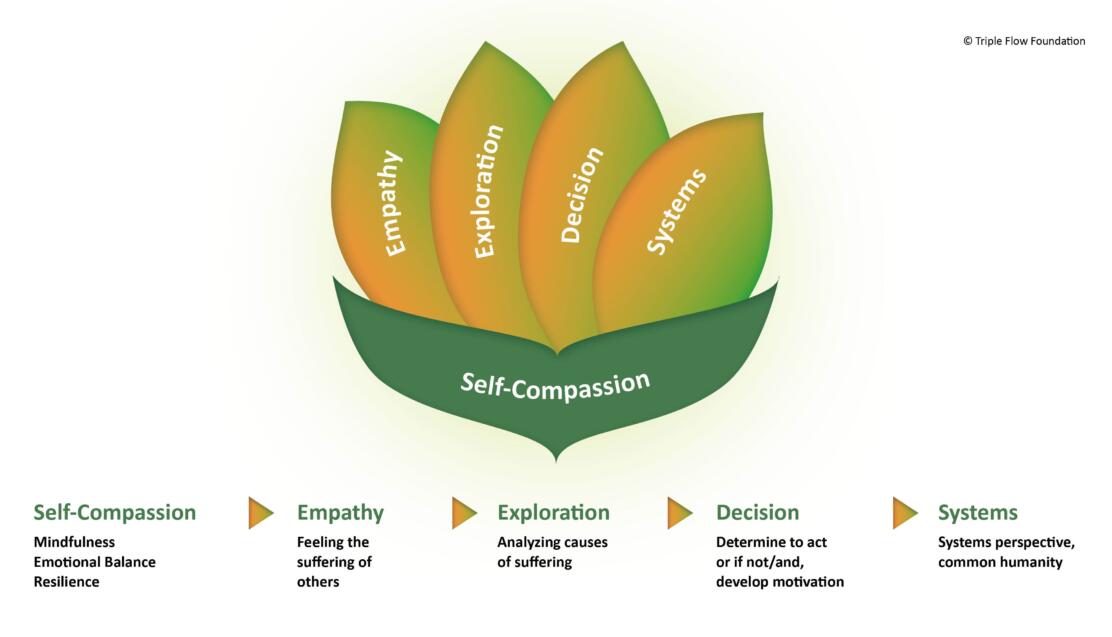The Pain of Mass Layoffs: How To Lead with Compassion?
by Sander Tideman & Annemieke van der Werff
While rightsizing is a continuous improvement process, the impact on staff – especially in the tech and finance sectors, with their many layoffs – is currently causing much anxiety. In the last few weeks Microsoft communicated to cut 10,000 jobs, or roughly 5 percent of its work force. Google will cut 12,000 jobs, or about 6 percent of its total. The financial sector is following suit: Goldman Sachs said that just over 3,000 employees will be let go, but the final number is yet to be determined. That scale of layoffs would be the largest since the 2008 financial crisis, one of our sources said. How to create readiness for this challenge as a leader is described in this article.
It is evident that losing a job is painful. But not only for the one who is fired. Our clients across the financial industry tell us that it is difficult for the one who is delivering the message, too. Why? First, in mass layoffs like those currently taking place, managers have no choice. It is a decision that the top has made and managers need to execute. Second, how do you determine who to fire? It is not simply a matter of poor performance. The required numbers exceed the amount of under-performers, which means that good people are being let go, too.
Third – and this is causing the most pain – managers struggle in dealing with the emotional impact on the one who is being let go. Their families will suffer and careers may be ruined, or at least stalled. How do you talk to the one you must fire? How do you process the shock and grief that they and their families will be experiencing? How do you justify the decision to fire someone who has performed well?
The leaders we work with typically process this pain in silence. Often, they feel forced and ashamed. They are part of the group allowed to stay, so they should be happy, they tell themselves. They don’t feel permitted to show their own pain. Outwardly they may show resolve, but inwardly they suffer. In this confused state, managers often mishandle the difficult situation. They may hide behind the company’s decision and fail to show compassion or humanity – as a result they can appear to be insensitive. This can add insult to injury and thus everyone suffers. A lose-lose situation.
It does not need to be like this. The latest insights in the science of compassion, which includes compassion for oneself, give us a path to deal with this “unseen” emotional pain. Summarizing this, we have developed a simple five-step approach – SEEDS, which forms an essential component of our Compassionate Leadership in Finance (CLIF) approach.

1. Self-compassion
Ground yourself by acknowledging how you feel. This situation is tough for you, and would be for anyone standing in your shoes. Connect with your body, with your breath, try to let go of any unnecessary tension, of feelings of guilt or shame. It is not your “fault” that this is happening, but you are responsible to deliver the decision and consequently the bad news. Feel kind and forgiving to yourself and prepare yourself – this is an act of self-care and self-compassion.
2. Empathy (Open Heart)
Once you have grounded yourself in self-compassion, move your care to the one who is laid off. Open your heart; try to imagine how it feels to be the other person. This is empathy, which is a natural response of human beings when they face the pain of others, so don’t try to suppress this emotion. It is natural and it should be felt, as it helps both the other person as well as yourself.
You can express the feeling of empathy in an appropriate way; that is, say how you feel in a way that the other person can feel your empathy as a genuine act of care. Inquire into the emotional state of the other. What does this decision mean for the other? What impact has it on his family? How does it make them feel? Bearing in mind that you cannot change the reality at hand.
3. Exploration (Open Mind)
Don’t just leave it there. Move from the emotion, from the open heart, to the open mind, into a state of mutual exploration. Once you have clarified the decision and you sense readiness to move the conversation forward, you can take it to the next stage. What does this mean for their team and their career? What are their chances for new work? What talents and deeper drives does their career rely on? What do they really want? How can you be of support? Might this situation present a blessing in disguise? What is the silver lining of this painful cloud? The other may not be fully open to explore all this, but you can offer your help and wisdom for a later time. From our experience working with leaders, we are surprised to see that many people are capable of seeing the bigger picture, and renew their commitment to their deeper motives and purpose.
4. Decision
Throughout the conversation, be clear. The decision has been made. Now help your employee to face the same decision. There is time for grief and perhaps some blame, but it is not so useful to indulge in these emotions. Self-pity is a waste of time. Consider that facing the new situation is an act of courage, for both of you.
Don’t take any of this situation as ‘personal’. No-one is to blame. You can help the one who is laid off by embodying this courageous state of mind. You can encourage your colleague to rely on their talents, unique gifts, purpose, and the chance to pursue unmet dreams. This temporary setback is an opportunity to become stronger and more resilient – no matter how painful it is now.
5. Systems approach
Reflect on the fact that you are not alone in this. One day you may be laid off. You may be in the position of your colleague. This is simply happening because it is part of how our economy has been designed. Therefore, we should ask, what is the point of these situations? The best way to look at it is to see them as opportunities for us to learn. And to show our humanity – the act of compassion, rooted in self-compassion, perfects our human potential, as well as enhances our leadership capacity.
Leadership is rooted in the ability to transform adversity into opportunity. Perhaps the relationship with the one who is fired may deepen and grow. You are likely to stay connected and meet again in more fortunate and fertile circumstances. Who knows what is possible then? With this, return to self-compassion. Give yourself a compliment: you have handled a difficult situation as best as you could.
These five steps are not necessarily sequential. They are five ingredients of a meal that you have to cook. Self-compassion is like the stove, it is the foundation; the other four steps are elements of a good, nurturing meal. You can also regard self-care as the stem of a flower. The other four are like the petals of the flower. Together they create beauty, and they can plant a seed into building a more compassionate culture in the workplace.
Do you want to know more? Do you want become part of a community of leaders who are practicing compassionate leadership?
